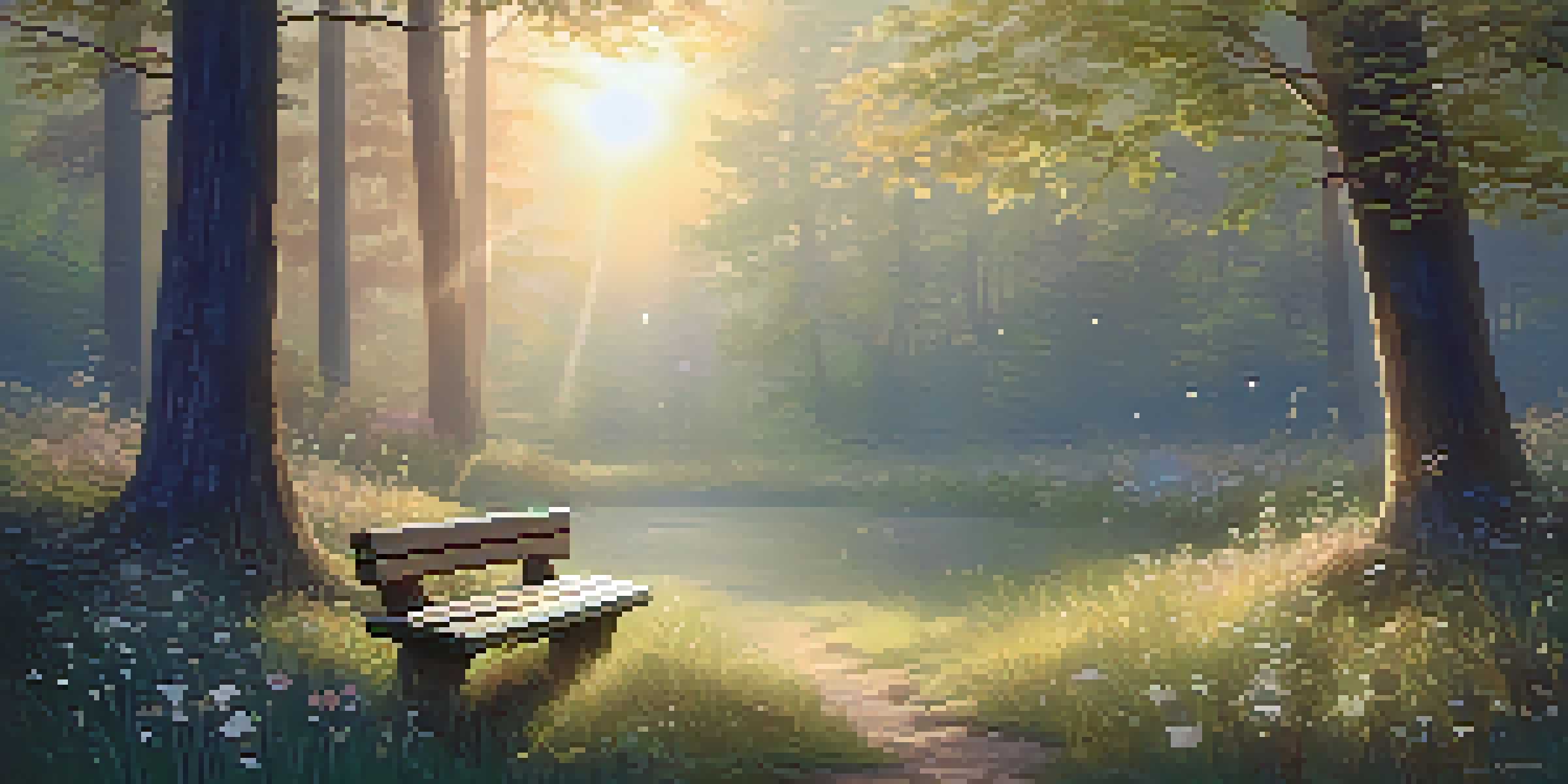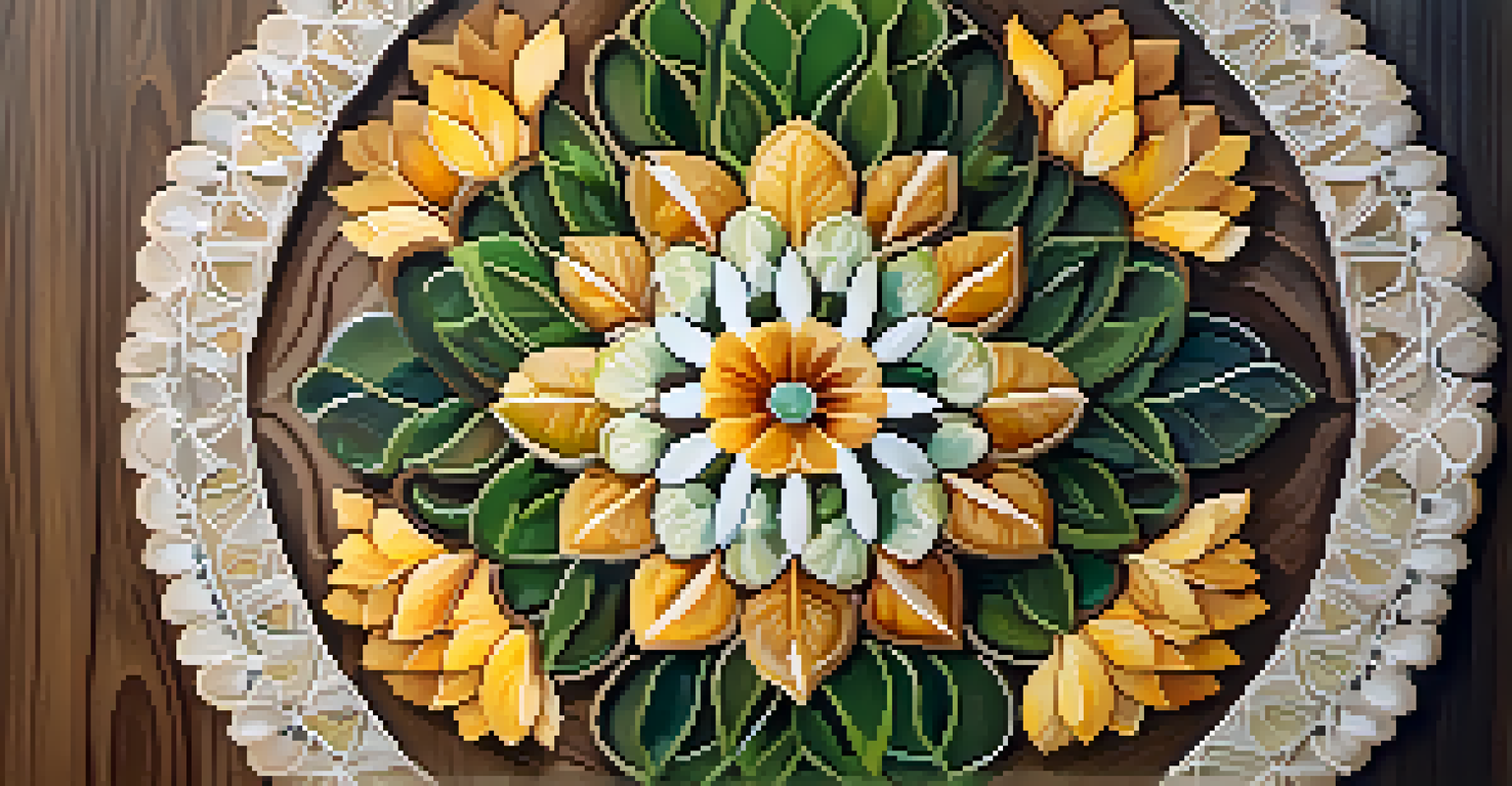Art and Spirituality: Exploring the Divine in Human Experience

The Intersection of Art and Spirituality
Art and spirituality have long been intertwined, each enriching the other in profound ways. Artists often draw upon spiritual themes, using their creations to express the inexpressible, the divine mysteries of existence. This relationship invites us to explore not only the artwork itself but also the deeper meanings behind it.
Art is the most beautiful of all lies.
For instance, ancient rituals often included artistic elements, from cave paintings to intricate sculptures, which were believed to connect the physical world with the spiritual. These artistic expressions served as a medium for communication with the divine, reflecting a universal quest for understanding and connection.
In contemporary times, artists continue to grapple with spiritual questions, using various mediums to convey their experiences and insights. Whether through painting, music, or dance, these expressions invite viewers to reflect on their own spiritual journeys, fostering a sense of shared human experience.
Art as a Medium for Spiritual Exploration
Art serves as a powerful tool for spiritual exploration, allowing individuals to explore their beliefs and emotions. When engaging with a piece of art, one might find themselves transported to a different realm, pondering the deeper truths of life. This experience can evoke feelings of peace, joy, or even discomfort, all of which are essential for personal growth.

Consider the works of artists like Vincent van Gogh, whose paintings are imbued with emotion and spirituality. His famous piece, 'Starry Night,' invites viewers to contemplate the vastness of the universe, tapping into feelings of both insignificance and wonder. In this way, art becomes a pathway to spiritual reflection.
Art and Spirituality are Interconnected
Art serves as a profound medium for exploring and expressing spiritual themes, enriching both the creator and the viewer.
Moreover, art can facilitate community connections, bringing people together in shared spiritual experiences. Group exhibitions, performances, or workshops often foster dialogue and connection, allowing participants to explore their spirituality collectively.
The Role of Ritual in Artistic Expression
Ritual plays a vital role in both spirituality and art, often serving as a bridge between the mundane and the divine. Many cultures incorporate artistic practices into their spiritual rituals, enhancing the experience and allowing participants to engage with the sacred. This fusion can be seen in traditional ceremonies, where music, dance, and visual arts come together to create a holistic spiritual experience.
The purpose of art is to lay bare the questions that have been concealed by the answers.
For example, in many Indigenous cultures, storytelling through art is a key aspect of spiritual rituals. These narratives not only convey cultural wisdom but also express a deep connection to the land and the cosmos. The integration of art into these rituals enriches the spiritual journey, making it more tangible and relatable.
In modern practices, artists often create rituals around their work, inviting audiences to participate in the process. This engagement transforms the act of viewing art into a shared spiritual experience, where the boundaries between artist and audience blur, fostering deeper connections.
Art as a Reflection of Spiritual Beliefs
Art is often a mirror reflecting the spiritual beliefs of a culture or individual. From religious iconography to abstract interpretations of the divine, artists convey their inner landscapes and collective beliefs through their work. This reflection not only provides insight into the artist's mind but also allows viewers to engage with and question their own beliefs.
Take, for instance, the use of religious symbols in Renaissance art. Artists like Michelangelo and Raphael depicted biblical stories and figures, aiming to inspire awe and reverence. These works not only served a religious purpose but also acted as a commentary on the human condition, exploring themes of faith, sacrifice, and redemption.
Rituals Enhance Artistic Expression
Integrating ritual into artistic practices bridges the mundane and divine, creating a holistic spiritual experience.
In contemporary art, this reflection continues, often challenging traditional notions of spirituality. Artists may question established beliefs, using their work to provoke thought and inspire dialogue around spirituality's role in modern life.
The Healing Power of Art and Spirituality
The intersection of art and spirituality holds significant healing potential, offering pathways to personal transformation. Engaging with art can provide solace during difficult times, allowing individuals to process emotions and experiences. This therapeutic aspect of art is often harnessed in spiritual practices, where creative expression serves as a form of meditation or prayer.
For example, many people find comfort in creating art as a way to express grief or loss. Whether through painting, writing, or music, these creative outlets can facilitate healing by allowing individuals to confront their emotions and share their stories. This process not only fosters personal growth but also builds a sense of community and connection.
Additionally, art therapy has gained recognition as a powerful tool in mental health and spiritual well-being. By integrating creativity into therapeutic practices, individuals can explore their spirituality and emotions in a safe and supportive environment, promoting healing and self-discovery.
Exploring the Divine Through Artistic Practices
Many artists actively seek to explore the divine through their creative processes, viewing art as a spiritual practice in itself. This approach often involves mindfulness and intentionality, where the act of creation becomes a sacred ritual. Artists may find inspiration in nature, meditation, or personal experiences, allowing these influences to shape their work.
An example of this can be seen in the practice of mandala art, which originates from various spiritual traditions. The creation of mandalas involves intricate patterns and shapes, often used as a form of meditation. This artistic process not only fosters focus and clarity but also invites a deeper exploration of the self and the divine.
Art Reflects Cultural Spirituality
Art acts as a mirror to the spiritual beliefs of individuals and cultures, inviting deeper engagement and dialogue.
In this way, art becomes a conduit for spiritual exploration, where the journey of creation holds as much significance as the final piece. This perspective encourages artists and viewers alike to embrace the process of discovery, celebrating the connection between art and spirituality.
The Future of Art and Spirituality
As society continues to evolve, so too does the relationship between art and spirituality. The digital age has opened new avenues for artistic expression, allowing artists to explore and share their spiritual journeys in innovative ways. From virtual reality experiences to interactive installations, the boundaries of art are expanding, inviting audiences to engage with spirituality in fresh and exciting manners.
Moreover, the rise of social media has created platforms for artists to share their spiritual practices and artwork globally. This interconnectedness fosters dialogue and collaboration, encouraging diverse perspectives on spirituality and its expression through art. As a result, we are witnessing a rich tapestry of artistic expressions that reflect our shared human experience.

Looking ahead, the future of art and spirituality promises to be a dynamic interplay of creativity and exploration. As artists continue to seek meaning and connection, we can anticipate a vibrant landscape where art serves as a powerful vehicle for spiritual growth and understanding.